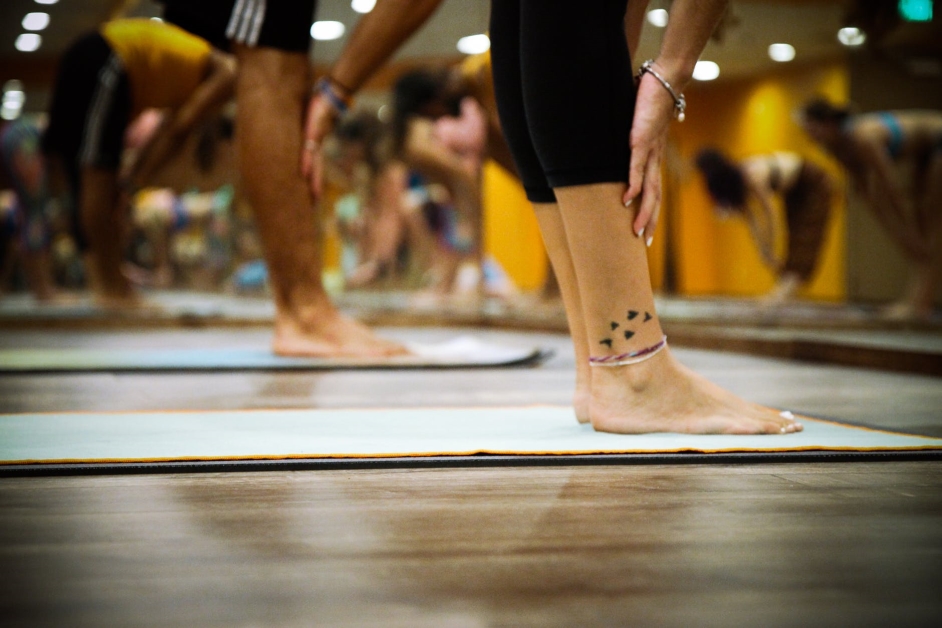Home Fitness
What are the benefits of stretching?
What are the benefits of stretching is a question we get asked often.
Well, there are many great benefits you can get if you decide to add stretching to your daily routine
Even if you don’t plan to work out vigorously, several hours a day, you will still get to see many of these great benefits.
Implementing your stretching routine into your daily routine will leave you feeling more energetic and increase your level of flexibility.
Here are a few of the benefits you will see:
Flexibility:
Yes, this is the most obvious, but it can have a major impact on the way you move and feel.
Posture:
Poor posture may not be something you are concerned about, but it’s a common problem for many people.
Stretching promotes better body alignment, leaving you with a better overall posture, even making you appear a little taller, as it allows you to stand up straighter.
If you slouch a little as you walk, this is an area you may see great results.
Increase Energy:
Stretching helps get the blood flowing throughout the body and improves nutrient flow. This leaves you feeling refreshed and invigorated while increasing your energy levels.
Calm The Mind:
Use your daily stretch to calm your mind. Take the time to recharge and forget about the stresses you carry. Tension on the muscles, coupled with an increased blood flow will leave you feeling calmer, resulting in a more peaceful mindset
Release Tension:
When we feel stressed and overwhelmed, our muscles tighten up as a defensive mechanism. Stretching will leave you less tense as its an effective form of stress relief.
Injury Prevention:
When muscles are warmed up, movement becomes more fluid, and this helps to decreases the likely hood of an injury.
Reduced Soreness:
Nutrients are carried in your blood, and by stretching and increasing your blood flow, you are increasing the flow of nutrients, which can help to reduce soreness in the body.
Why You Should Stretch After A Run Or Workout:
Stretching is often a controversial topic in the running world, but here are some of the things most runners would agree can happen if you don’t stretch after a run
Muscles Contractions:
Without stretching after a workout, the muscles begin to contract, which can lead to sore knees or painful hips. This is caused by muscular contractions surrounding the joint, and stretching helps to loosen the muscle, which helps aid recovery and prevent pain.
Lactic Acid:
Stretching can also help you flush out the lactic acid that has accumulated during your workout. The build-up of lactic acid is what gives you that burning feeling during a workout or running etc. I’m sure you know exactly the feeling I’m talking about.
Muscles Imbalances:
Workouts can keep specific muscles in a contracted state, as others are in a lengthened state, which over time can lead to muscle imbalances. This may lead to increased wear and tear on your joints and a reduced range of motion.
How Often Should You Stretch?
A panel of experts convened by the American College of Sports Medicine reviewed a wide range of studies to help answer this question.
Stretching has not been studied as much as other forms of exercise, so there is not as much science, but on the available evidence, the panel agreed that:
Healthy adults should do flexibility exercises, such as stretches, yoga, tai chi, for all major muscle-tendon groups-neck, shoulders, chest, trunk, lower back, hips, legs, and ankles. They recommend doing these flexibility exercises, at least two, to three times a week
For the best results, they recommend you spend a total of 60 seconds on each stretching exercise. This means if you could hold a particular exercise for 15 seconds, repeating it three more times would be ideal. If you can hold for 20 seconds, repeating it two more times would do.
Tips for safe stretching:
- It’s best to relax and breathe as you would normally would, during a stretching exercise. Then as you stretch, push the breath slowly out your mouth and count up to 15 seconds or however is right for you.
- Your stretch should always be slow and smooth. It should never be bouncy or jerky, as this can cause your muscles to tighten, which could lead to an injury.
- You only need to hold your stretches for short periods, which is between 10-30 seconds depending on your fitness level. Then slowly repeat each of your stretches 3-5 times
- It’s normal if you feel a mild pulling feeling during a stretch, but if you feel a sharp, shooting pain, it’s your body telling you to ease up or stop. While stretching can be good for you, overstretching, on the other hand, can be bad for you and lead to injury.
- Keeping your joints slightly bent and not locked in a straight position will reduce the likely hood of suffering an injury.
Does stretching count as exercise?
Yes, flexibility exercise is classed as one of four types of exercise along with endurance, strength, and balance.
There Are Two Types of Stretching:
Many people don’t realise there are two types of stretching. One is called static stretching, and the other, dynamic stretching.
Static stretching is, yes, you guessed it, when you’re in a static position, holding and stretching part of the body with another part of the body.
Here are some static stretches from the youtube channel HASfit. You can visit their website here.
Dynamic stretching is when your joints and muscles go through a full range of motion. These active movements are often used to warm up your body before exercising.
Dynamic stretches are often done to mimic the activity you are about to perform.
Here are some examples of Dynamic Stretching from HASfit.
Relieve pains and discomforts
When you think about it, virtually every activity you do relies on the ease of motion. As mentioned throughout this article, stretching can help you in many ways and can be used as a tool for you to relieve certain pains and discomforts. Whether you are a sports star, a hiker or a biker, the right stretching program could be great for you and lead you on a path to better performance.
As we grow old, stretching could help us accomplish certain tasks, including climbing the stairs and walking by keeping us active and flexible.
While you may be tempted to skip right to the stretches after reading about the benefits of stretching, it’s important to think about your safety first.
Thank you for reading this post. I hope it helps you on your journey.


